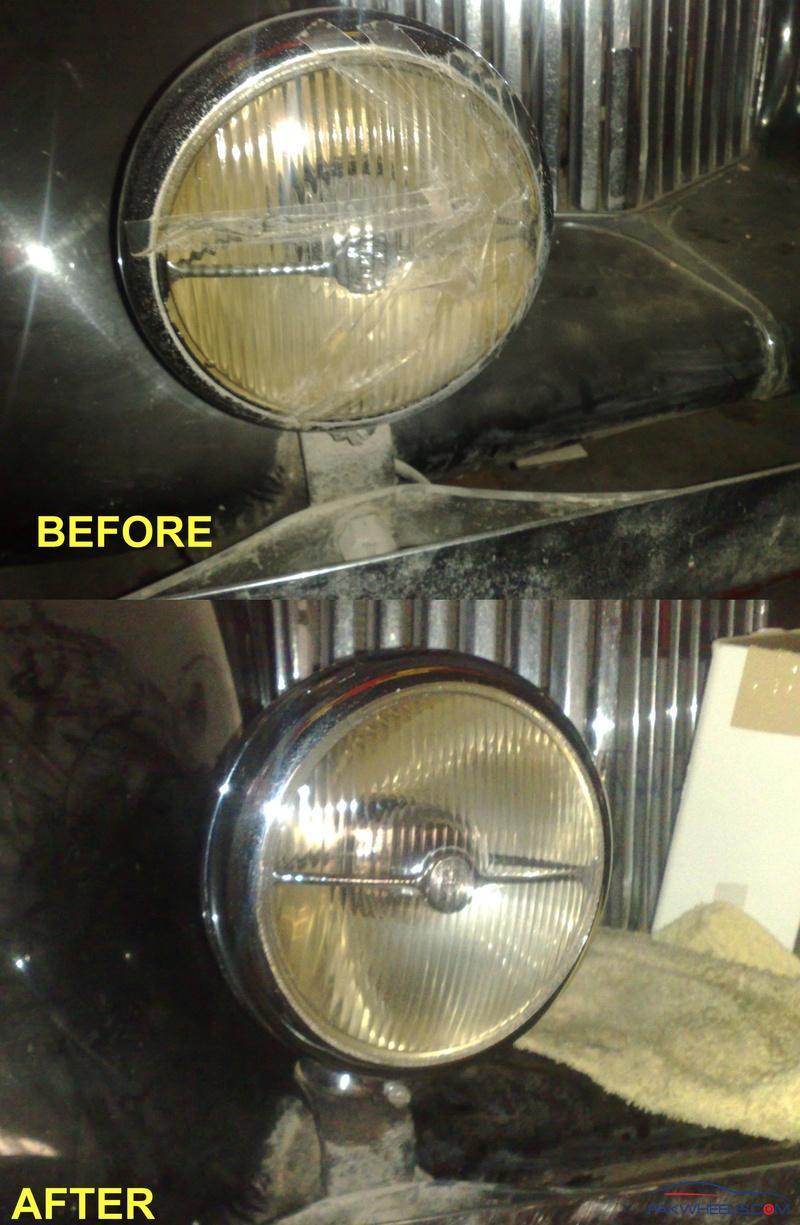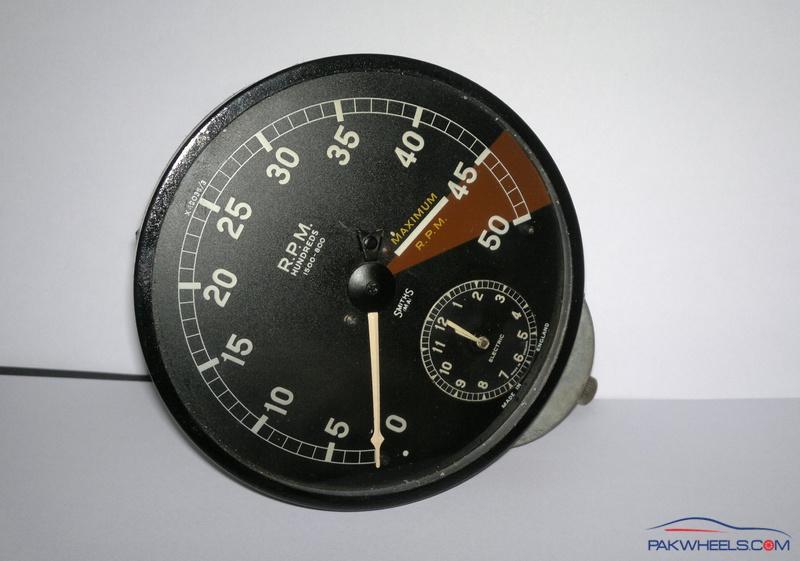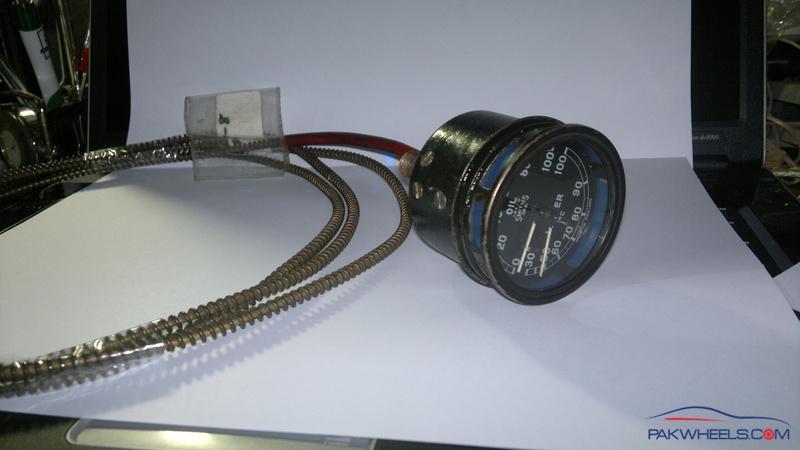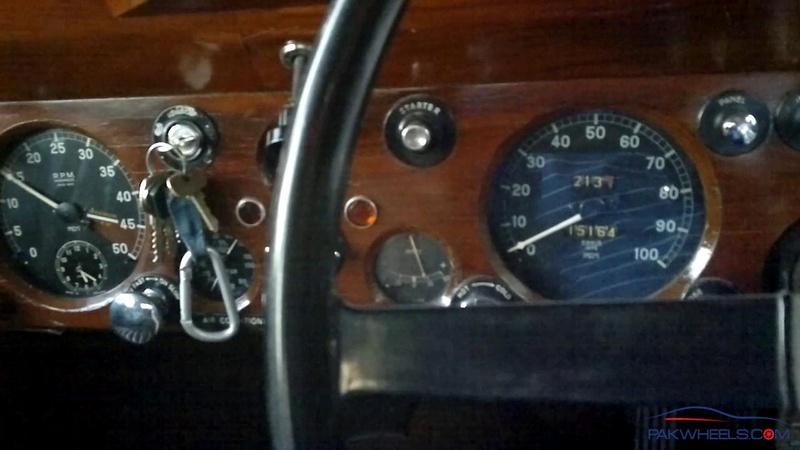I prefer to being work very early in the morning soon after Fajir. It?s cool, quiet and peaceful. The day was spent working on the RPM meter, combined water/oil gauge and repairing the broken fog light.
The easiest item being the fog light was tackled first. All Jaguars Saloons and coupes of this model type were fitted with Lucas FT58 fog lamps or driving lamps as they are sometimes called. Surprisingly not only are the lenses for these lights available but one can still buy the complete assembly brand new.

You can see in the picture above the look of the lamp before and after.

Next on the list was the RPM meter. This is a Smith mechanical unit. Reason for it not working is a broken Bowden cable. The RPM meter takes its drive from the rear of the dynamo. I got myself a 76 Toyota Corolla speedometer cable, cut it to size and grafted the end connections from the original cable on to the Toyota cable. Since I had the RPM meter out, I serviced the it and fixed it back Here is a picture after the service was done.
I also serviced the clock but there is a bug in it. It works fine for hours while on the test bench but when fitted in the dashboard it refuse to work more than a minute or two. Hummmmm!!
The water/oil gauge required a much more innovative approach. British sports cars and saloons had this type of combined gauge by Smiths as late as the mid 70?s; Only difference being that back in the day the both elements (water & oil) were mechanical items while the newer units are electronic. On the older units like mine both gauges are bourdon type pressure gauges. However the water side of the gauge is calibrated in degrees C. In order to affect a repair of the non working water gauge we have to understand its working principle. The gauge comprises of a conventional bourdon tube pressure gauge soldered to a capillary tube which is in turn soldered to a bulb. Within this sealed system is alcohol. The bulb part is in touch with the water of the cooling system. As the water temperature rises, the vapor pressure of the alcohol rises and so the water temperature gauge begins to rise and register a rise in (pressure) water temperature. This brings us to my car. In the case of my car, the capillary tube had been broken by a careless mechanic back in the 70's.
I had tried hard to find a replacement combination gauge for this car but to my disappointment it is no longer available and the best I was able find were repair services in USA who could repair my broken gauge. It sounded a bit complicated to me to deal with the customs guy exporting my gauge and then re-import the same. Too messy. I continued to look around. Eventually one of my parts suppliers informed me that he had a complete Jaguar Mk VIII combination gauge but it will not fit my car. I asked him to send it anyway. I took apart both the gauges and did some micro surgery whereby I replaced the entire damaged gauge/tube/bulb assembly with the good one from the Mk VIII gauge. The newly repaired gauge was calibrated in my calibration laboratory, the kitchen in a pot of boiling water (better half was not too pleased). Calibration was required in order to fix back the gauge needle correctly. Water was brought to a boil (100 deg C) and the needle fixed on the gauge to show 100 deg C. The water was then allowed to cool to room temperature with a thermometer in alongside my Jaguar temp. gauge. I took readings off both every 5 degrees and compared the results. Happy to say that both agreed within 2 deg C.
Here is a picture of the combination gauge all ready to be fitted back.

And here is the picture of the dashboard with the car revved up to 1500RPM. You will see the combination gauge showing an oil pressure of 65psi and water temp of about 55 deg C. Since this is an open cooling system the normal operating temp is for this car is about 75 - 85 deg C.

Now that I have sorted this out, I can focus on the brakes and then perhaps a much awaited photo shoot out in the open??? Perhaps over the next day or so I can get the exhaust sorted out too.
Cheers
